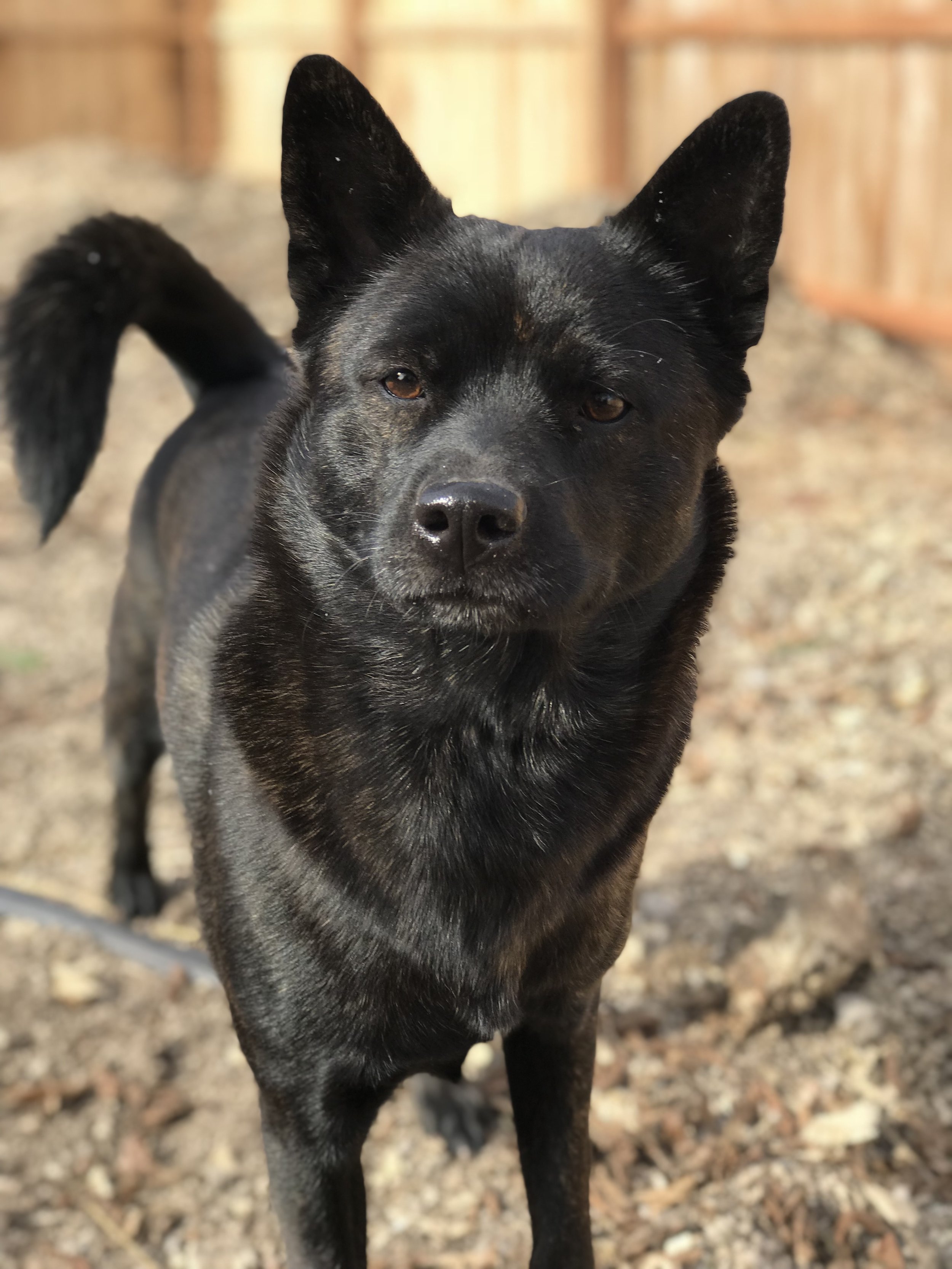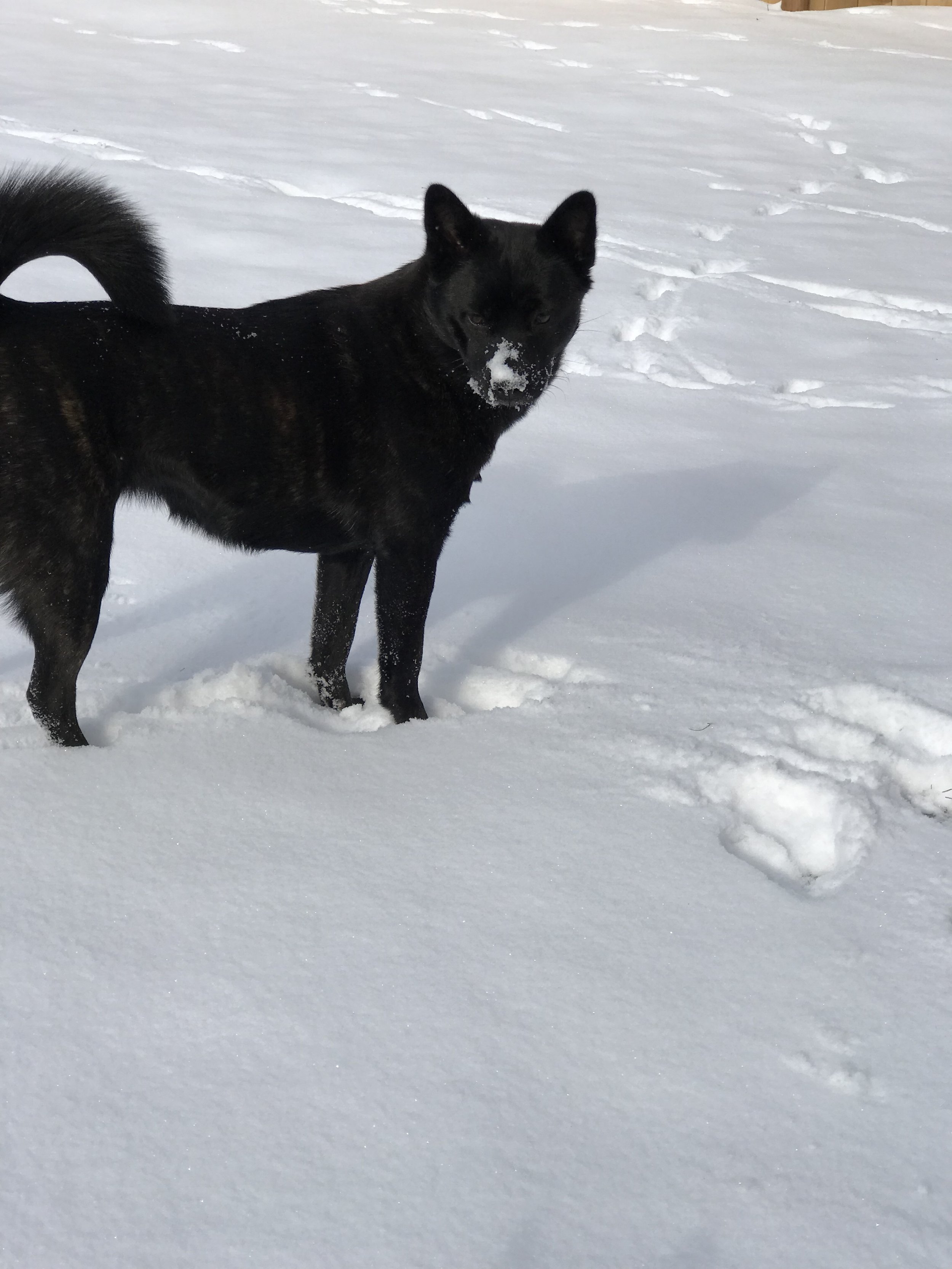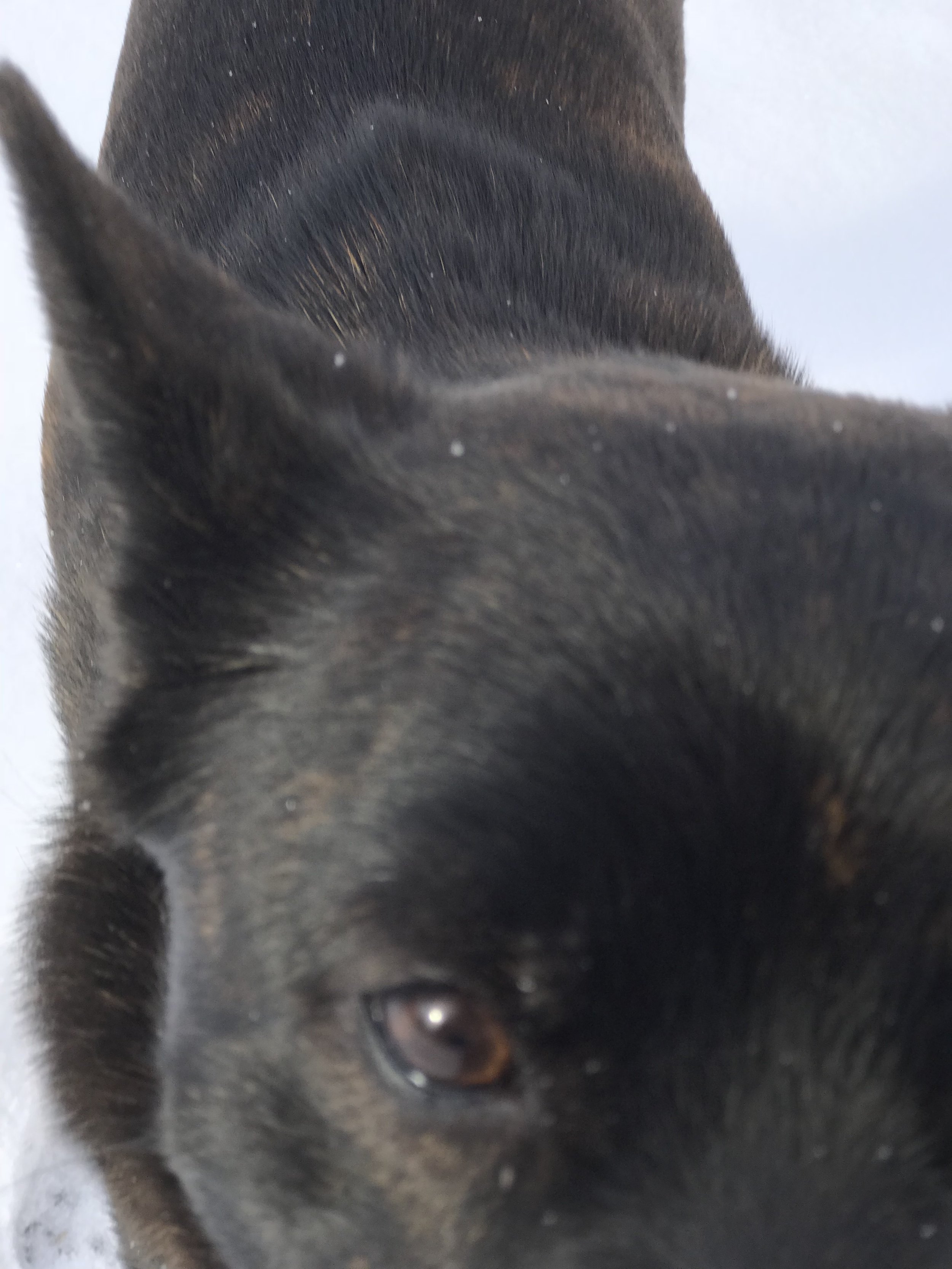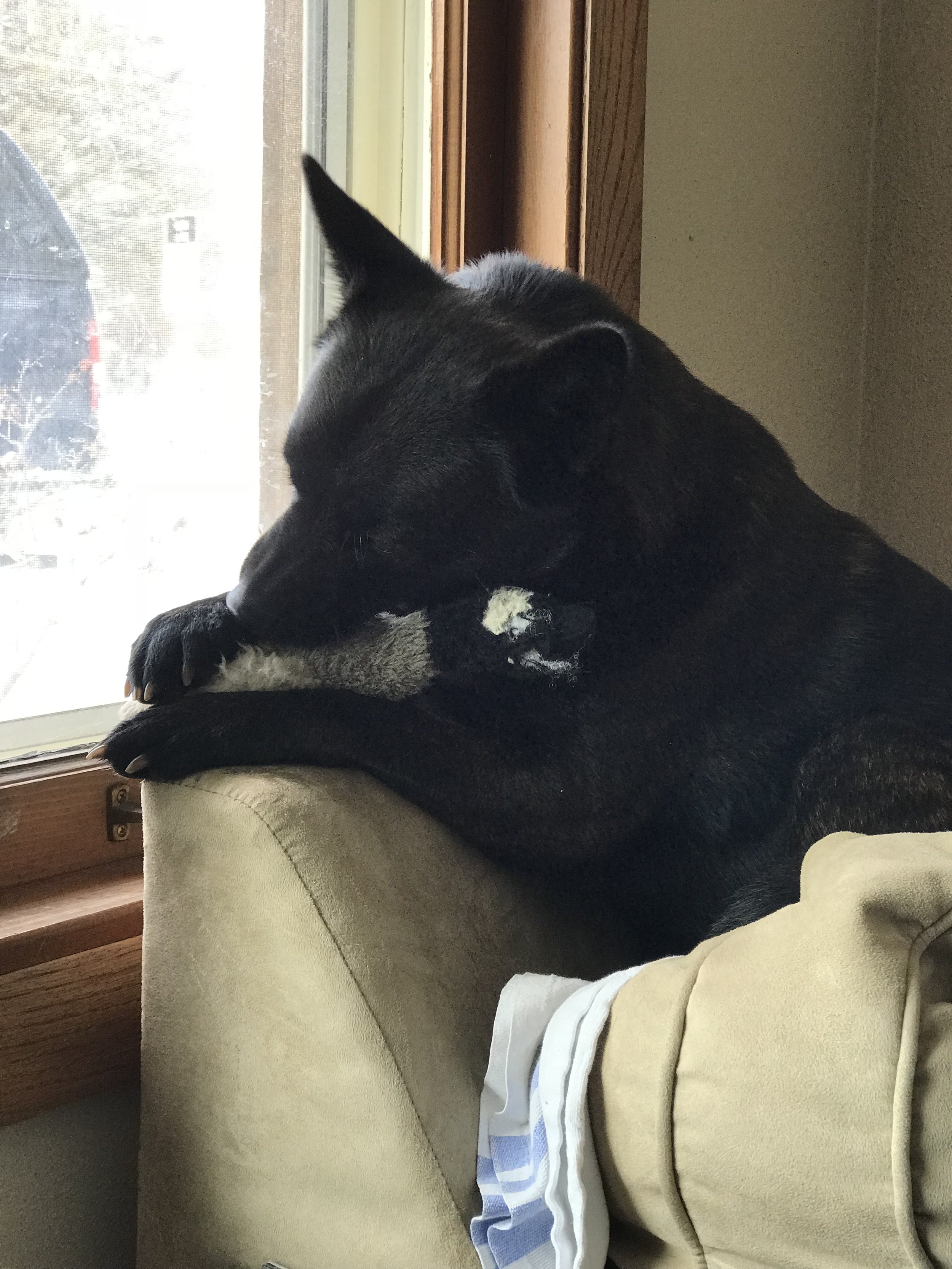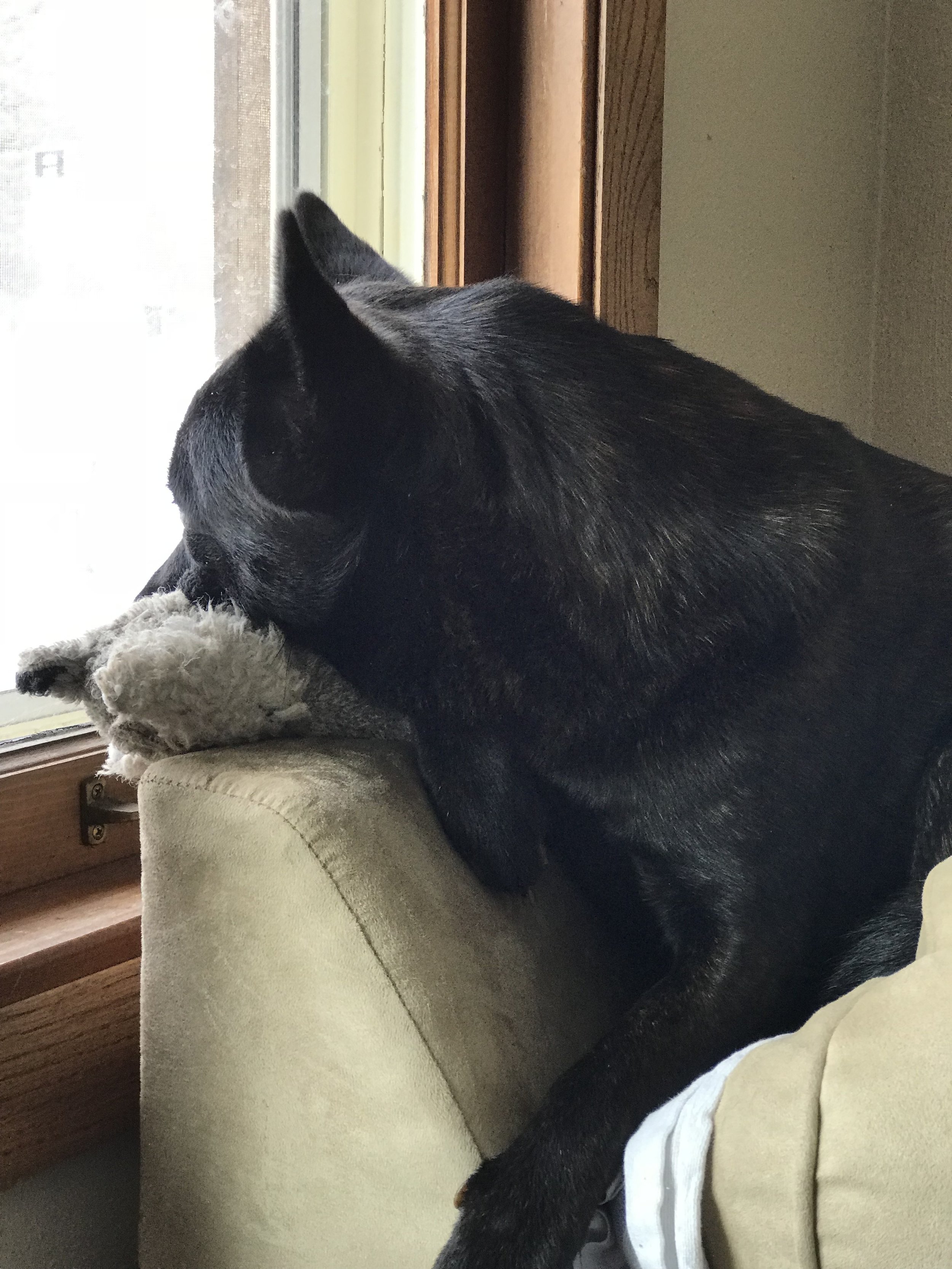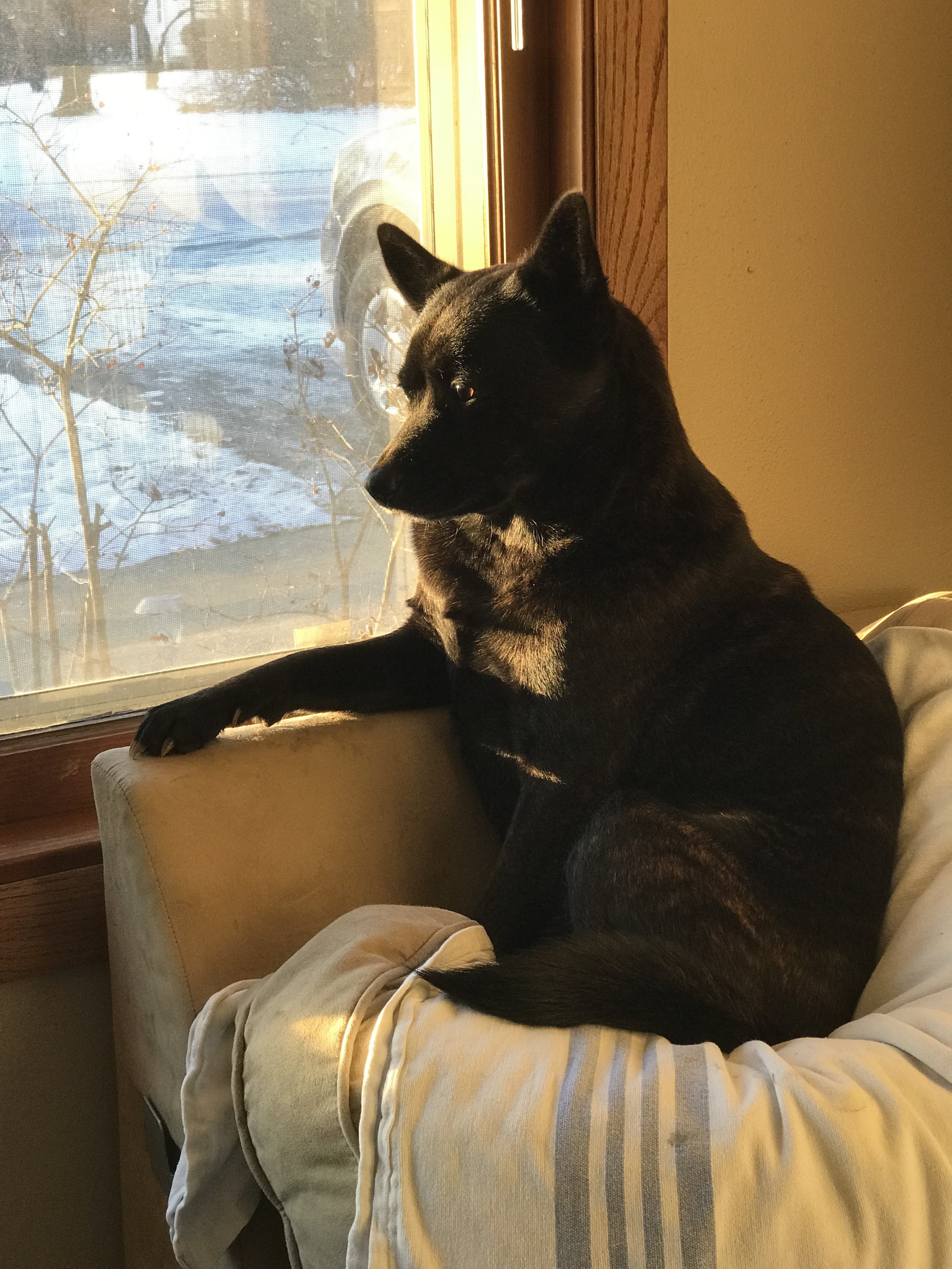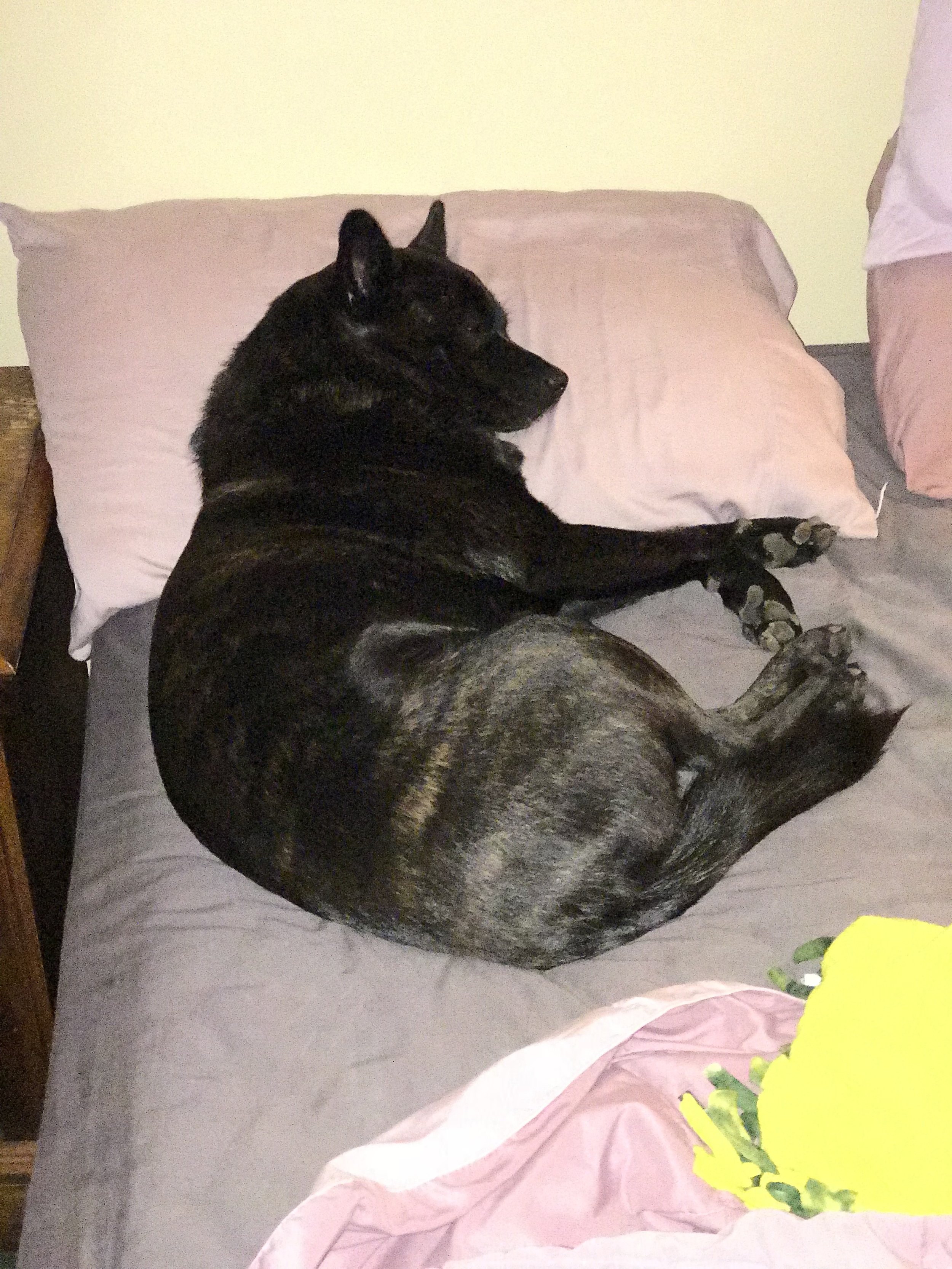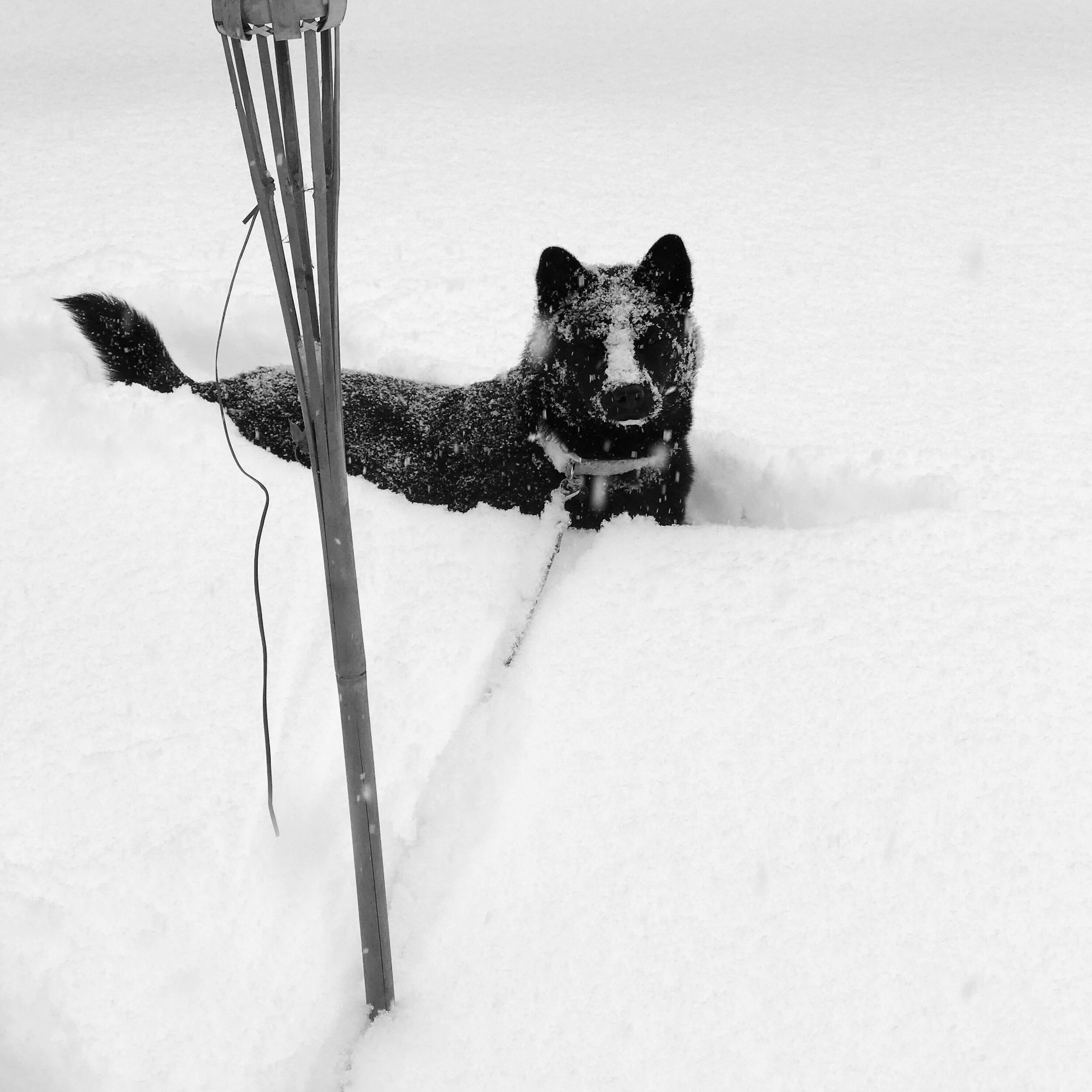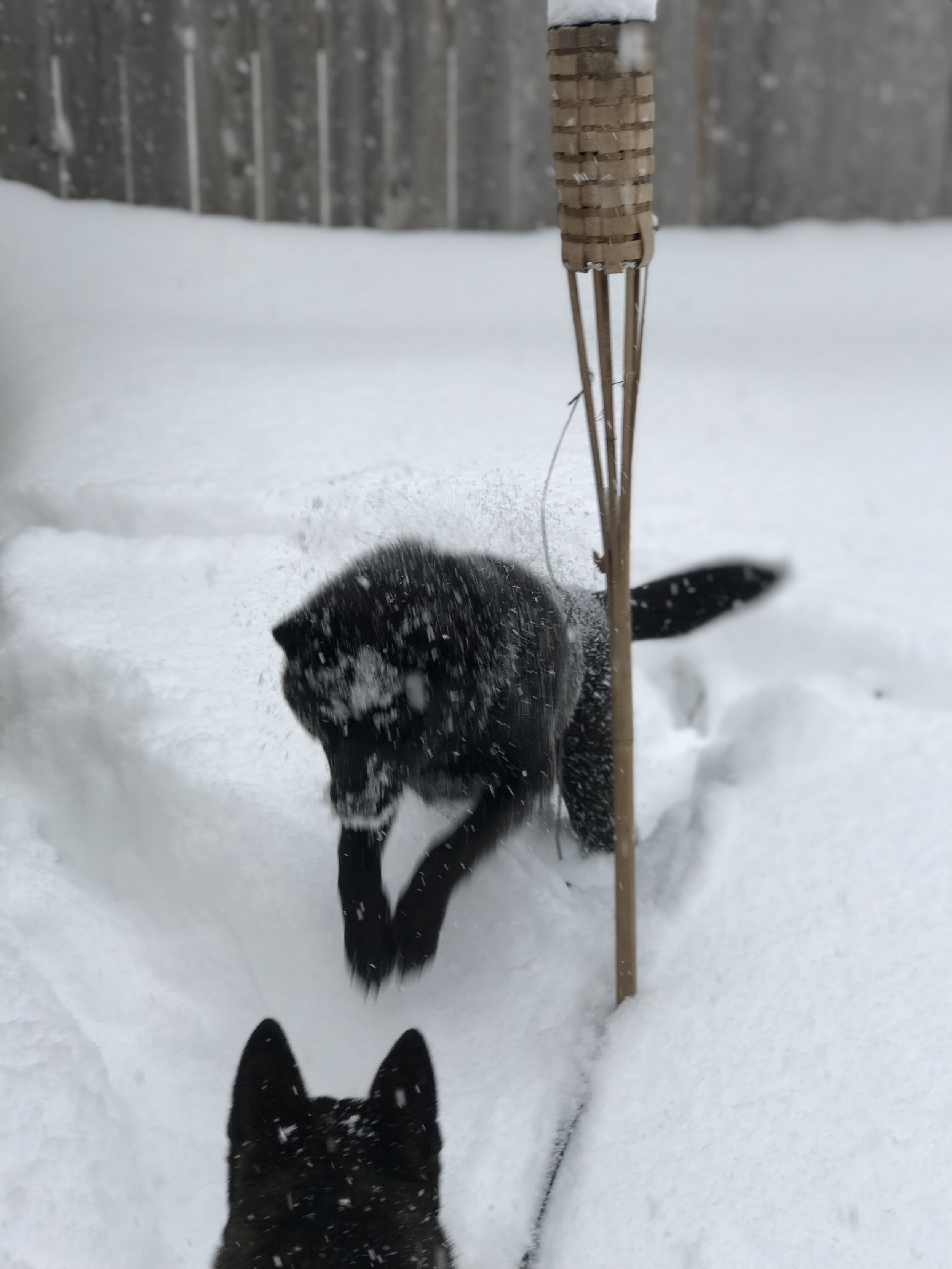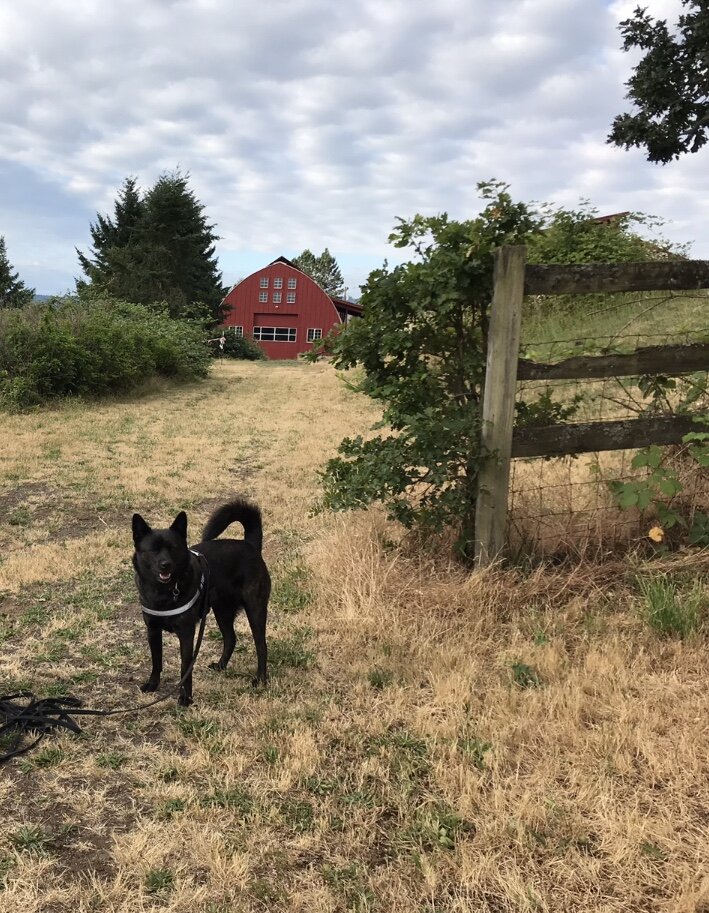(Above - Hayaikaze Go Rogue “Opie”)
KAI KEN, also known as Tora Inu (Tiger Dogs), are a primitive aboriginal dog native to the Kai region of Japan, known today as Yamanashi Prefecture.
The Kai were historically hunting companions and were used to hunt many types of game, including Kamoshika (a small mountain antelope) and wild boar. They were also used to flush small game and game birds such as quail and pheasant.
The Kai Ken Aigokai (KKA) breed standard description of the Kai is of a medium-sized dog, well balanced, sturdily built, with well developed muscles. The dog should show proper sexual dimorphism (the females should look like females, the males should look like males) . The height is roughly 40-50 cm at the withers. The movement should be light and nimble. The breed is agile and powerful with a strong homing instinct.
The forehead should be wide falling to a moderate stop, the neck having appropriate thickness and length, without looseness. The ears should be moderately thick, erect, triangular in form, of good shape and angled forward, and slightly larger than the other Japanese spitz-type dog breeds. The spacing between the ears should be neither too wide apart or close together. The eyes should be triangular in shape, the iris dark brown, which depending on coat color may show some shading. The lips should be tight with good pigmentation, the teeth strong with none missing and a proper bite.
The line of the back should be straight with hips powerful and tight. The tail should be thick and strong, either sickle or curled, roughly reaching the hocks in length. The limbs should be robust with hocks well developed providing for excellent leaping ability and speed.
The Kai were bred to hunt specific game and as a result, two "types" were distinguishable, the shishi-inu-gata type and the shika-inu-gata type. The shishi-inu has a stockier body and bear-like face and was used to hunt boar. The shika-inu was famed for deer hunting and had a longer, thinner body and fox-like face. Today, the Japanese do not distinguish between the two types as both played a significant role in the development of the breed.
A distinguishing feature of the Kai is its brindled coat. The Kai come in three brindle colors: Kuro-tora (black brindle), Chu-tora (brindle), and Aka-tora (red brindle). There is also a recessive gene that occasionally produces cream colored Kai. The creams are not shown or used for breeding in Japan.
Most puppies are born black and then brindle as they mature. Aka-toras (red brindles) are born lighter in color. Like all northern breeds, Kai have a double coat, which they blow (shed) twice per year, in the spring and in the fall. At other times they shed minimally. Their outer coat consists of longer guard hairs that stand upright and are somewhat water repellent. Their undercoat is thick and soft. The animal should have a mane. They rarely need bathing, they groom themselves and do not have a strong dog smell.
More about grooming your Kai Ken here or click on the Health & Behavior tab above.
The temperament is keen and very alert with a composed boldness. The Kai has a propensity toward loyalty to one master for life. These dogs are independent thinkers, quick learners, and great fun to hang out with. They have not lost their natural survival instincts like some domesticated dog breeds. Which means they are more likely to base their decisions on self-interest. They are resourceful, curious and can be stubborn.
The Kai are sometimes described as cat-like. They will stalk small game and birds the way large wild cats do. They stalk each other in play. They hunt mice and other burrowing rodents like foxes. They are very adept with their paws, they like to perch on high places, and they will play mind games with other dogs or cats. They also use an intense stare the same way cats do. If you have more than one cat, you probably know what I'm talking about. Cats will stare at each other until one blinks or looks away. The cat that blinks or looks away loses. Usually the one that loses leaves the room or at least moves from where it was sitting. Sachi can somehow get me to give her a piece of cheese using a Kai Ken mind trick. I will suddenly find myself standing by the open refrigerator door holding a package of cheese wondering what happened as she is walking away licking her lips. :)
KAI are pack-oriented. They want to be with their family as much as possible. They are often described as one-person dogs because they tend to bond strongly with one person in the family. They are still affectionate toward other family members but seem to have a favorite. This is usually but not always the person who cares for them, feeds them, exercises them, plays with them, and gives the best belly rubs. As with most of the Asian breeds, Kai have an extremely high sense of faithfulness to their owners and consequently, can be standoffish with other dogs or human strangers. Although they are naturally reserved with strangers, if properly handled by the breeder and socialized appropriately as puppies and adolescents, they can be taught to be quite friendly. Kai Ken have long memories for good and bad experiences and early socialization by the breeder and continuing socialization by the new owner is crucial. This will produce confident pups who can cope with stress and communicate appropriately with you, other people, and other dogs. Puppies and adolescents can get into trouble in a short amount of time and should always be directly supervised or humanely confined. This does NOT mean keeping them in a crate for 8 or 9 hours while the owner is at work. Like any intelligent caged animal, excessive crating will cause anxiety, obsessive-compulsive type behaviors, and other behavior and developmental problems. If properly handled as puppies, trained throughout their adolescence and adequately exercised, adults typically do fine being left loose in their home with safe toys while you are gone. When they are not with you, their favorite place will be a high vantage point to look out a window. Kai are typically territorial and always on the watch for intruders, human or animal, and will bark to alert you. Mine do not bark excessively and barking can be modified a great deal by proper training when they are young.
Puppies will have a variety of personalities and different levels of drives. Drives are instinctual survival behaviors that in combination with organs of sense and temperament, form a puppy's "doggy" character. This is one of the reasons I ask so many questions on my questionnaire. I want to match each puppy with the family best suited for his personality, taking into consideration the plans you have for your pup. For example, do you want a family dog or hiking companion? Are you going to show your pup? Do you want to do agility? Are you looking for a dog to hunt with?
KAI are very athletic, agile and are a hardy dog with great endurance. I often laugh out loud at their antics. Kai have been known to climb trees going after prey and scale walls or fences to escape or hunt. They are also great diggers and can dig under a fence in record time. They can jump incredibly high and run like the wind. Remember, they are an ancient hunting breed and their instincts have not been bred out of them. The natural environment in the Yamanashi Prefecture is characterized by steep mountains (Japan‘s highest, including Mount Fiji), fast moving streams and rivers, and thick forests. I like to think of them as small but powerful. They do not like being confined and should never be tied out in a yard unsupervised. Gentling and handling exercises must be started by the breeder and continued by the new owner. Bite inhibition is started by the dam and littermates and must be continued by the new owner.
So to sum up, a Kai Ken‘s physical abilities combined with his curiosity can get him into all sorts of trouble. Yep, this dog is a great escape artist. They want to know what’s going on in the neighborhood. The Kai's ideal home and family is an active family who like to be outdoors and are very proactive with socializing and training. Whether you live in the country or city, your Kai will require daily physical exercise and mental stimulation. They are very intelligent and will get bored if not engaged. Kai make great hiking companions and excel in all kinds of dog sports, such as agility, lure coursing, barn hunt, and tracking. These dogs are not for everyone but for the person committed to the time and effort in engaging them, the reward is huge. They will keep you on your toes. And oh yeah, mine never miss their afternoon nap on the back of the couch in front of the window :)
PICTURE GALLERY BELOW
Rogue River Kai Ken Picture Gallery
